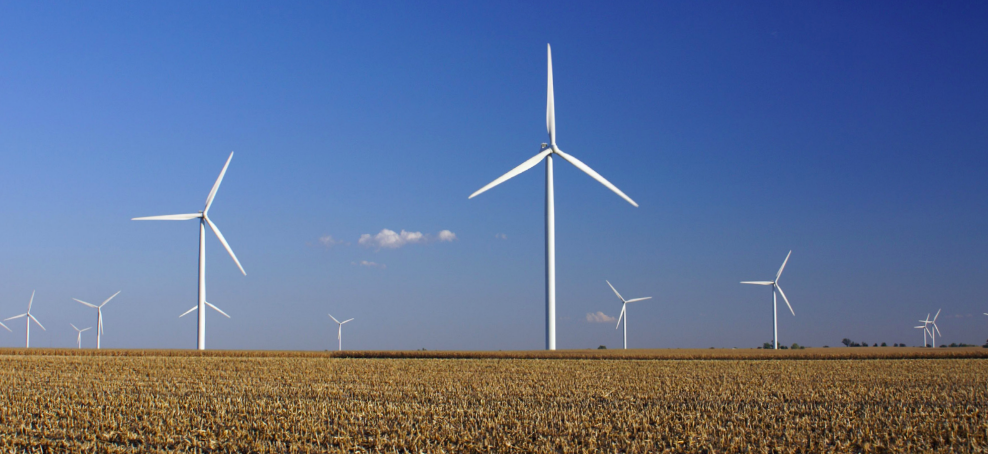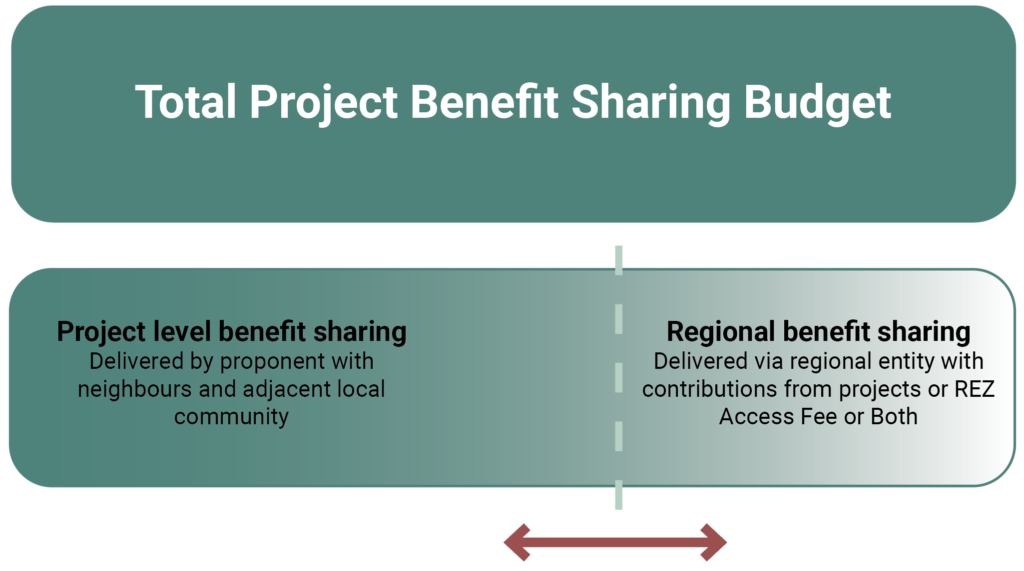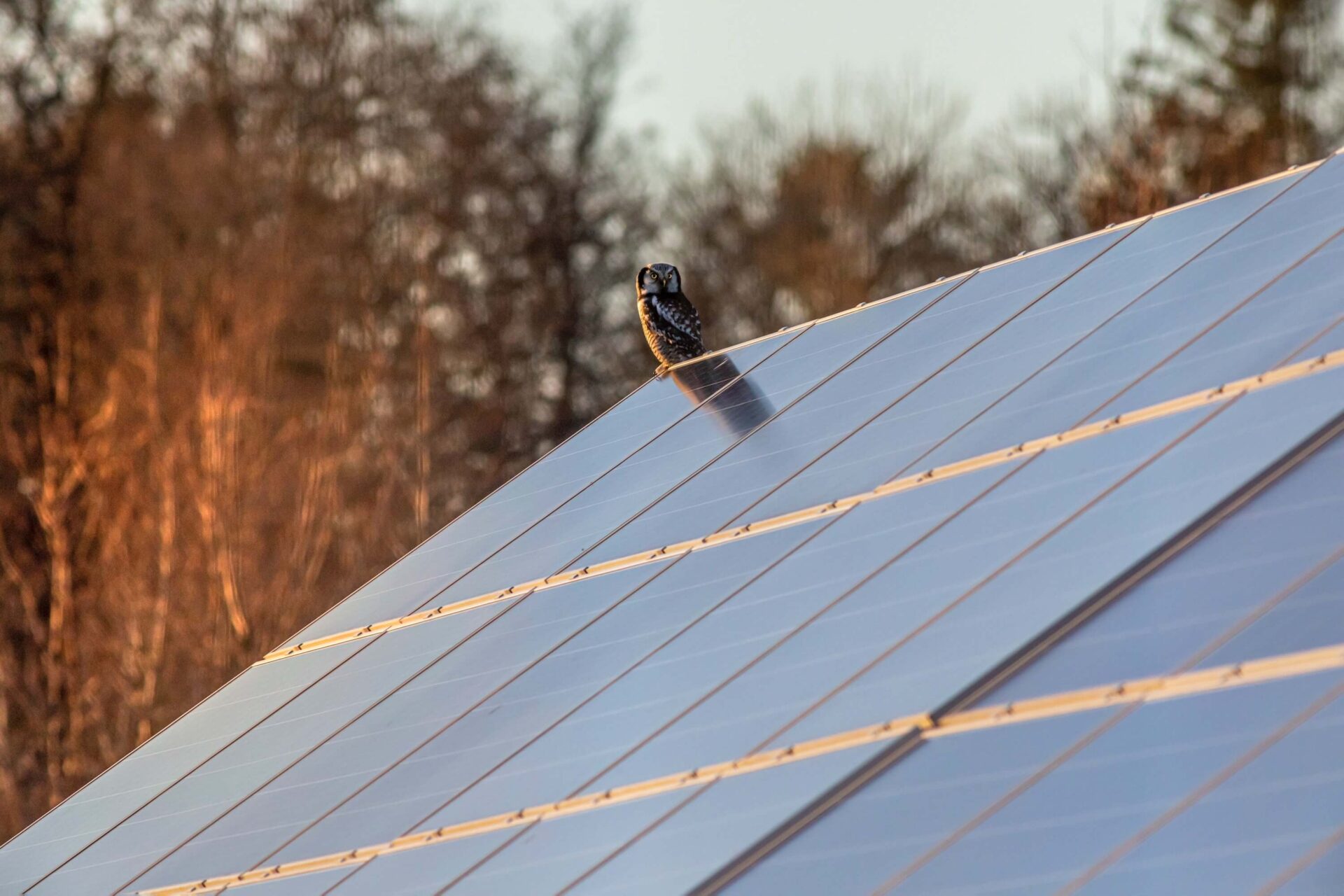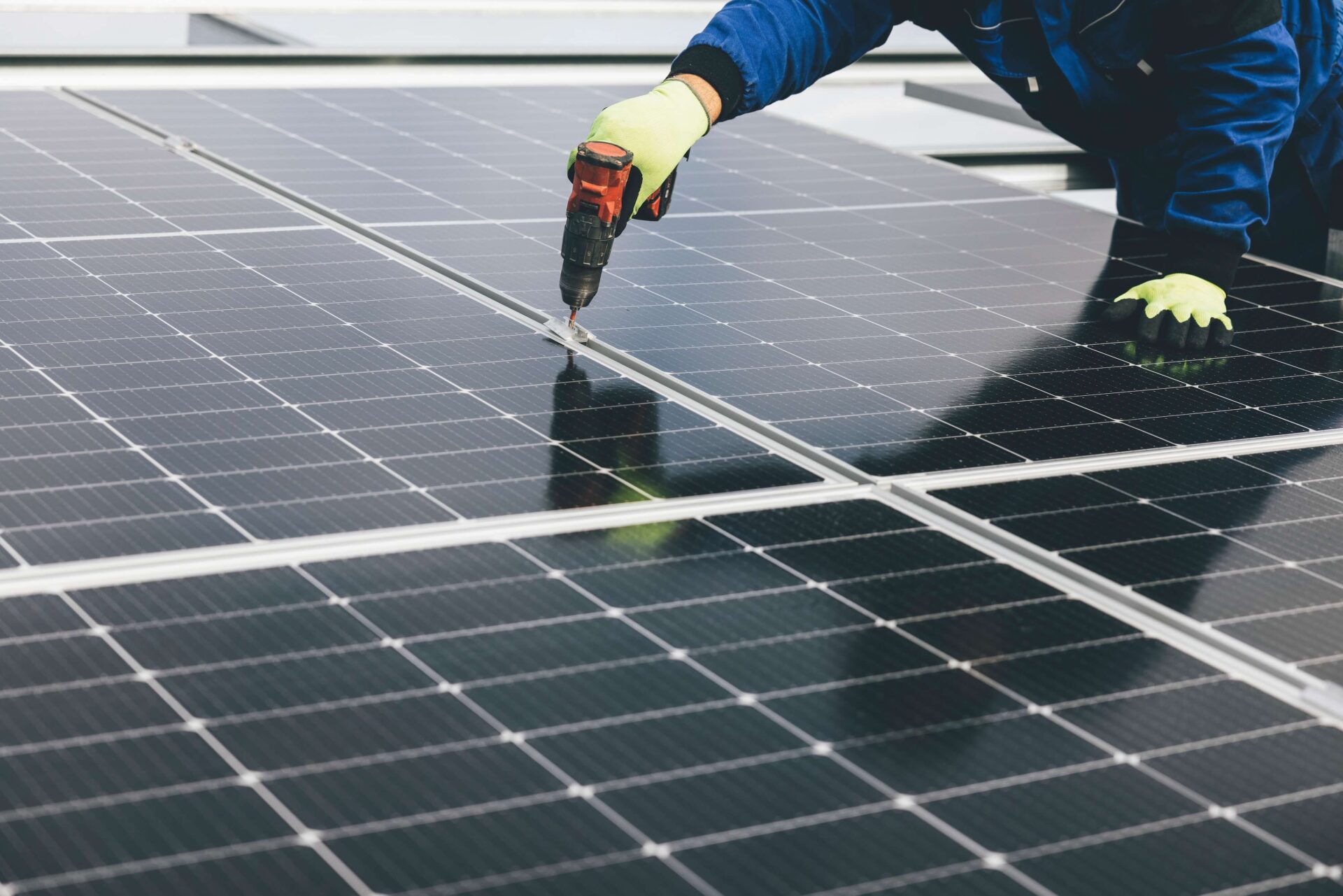The energy transition is bringing the promise of jobs to regional Australian communities. Some communities will be experiencing an influx of energy projects for the first time. Others, like the Latrobe Valley (‘The Valley’) in Gippsland, Victoria, are moving from coal fired power generation to new decentralised renewable energy projects. Our approach to workforce readiness and coordination in regional Australia will vary depending on the skill sets available within the local labour market. For example, preparing the renewable energy workforce in The Valley will be a very different endeavour compared to the New England region in New South Wales.
For regions that have played a key role in producing coal fired power, news of alternative livelihoods on the horizon is providing a much needed sense of security as the coal power sector contracts. As we decarbonise, we must embed protections, such as skills (re)training and alternate job creation, for workers and communities economically reliant on the fossil fuel industry. These are important aspects of a just transition – a transition that is fair and just.
In this way, the task of worker transition and workforce readiness has many moving parts; like building a house, foundations need to be laid, and things need to fit together at incremental stages. Flourishes can be added, but the labour of some key groups will be instrumental in making it a smooth process. In the case of Gippsland, workforce readiness and transition is being shaped by government (state, local and to a lesser degree, federal), industry (coal and renewable energy), education providers (TAFE, Universities and registered training organisations (RTOs)), unions and community. Importantly, much of this work has been done through partnerships and collaborations.
The Victorian state government has ambitious renewable energy targets – 40% by 2025 and net zero by 2045. To achieve this, the government has established a mix of policies and initiatives including:
- six renewable energy zones (REZ) across the state (one of which sits across Gippsland)
- a new government body to coordinate transmission infrastructure upgrades and development (VicGrid), and
- Australia’s first offshore wind (OSW) zone located off the coast of Gippsland.
The Latrobe Valley, in Gippsland, Victoria has produced the state’s energy for over 100 years. In 2017, one of its brown coal power stations Hazelwood – Australia’s (then) most polluting – closed with only 5 months’ notice, meaning 400 staff and 300 contractors were set to lose their jobs. A range of reactive measures put in place meant that many workers were able to find new roles, move into retirement or retrain. Yet the lesson from Hazelwood has been that worker transition takes time and has deep flow on impacts in communities. There are now three remaining coal power stations all likely to close by 2045, meaning a carefully orchestrated approach to moving workers into new industries will need to take place. Sitting at the nexus of a fading industry and an emerging one means the Latrobe Valley and Gippsland are arguably at the epicentre of Victoria’s energy transition.
But what does this mean for the workers? How can jobs be created in a coordinated way? Who are the players shaping regional livelihoods?
Government: Federal and state
As we mentioned in a recent blog, the federal government recently formed Jobs and Skills Australia (JSA) and commissioned it to undertake a Clean Energy Capacity Study. The study is yet to be finalised and findings released, yet the energy transition continues apace. Like the Net Zero Authority, these are critical pieces of work that are catching up on a decade of delay in federal politics.
While there are several election promises that are yet to materialise, the Victorian state government has a few examples of tangible workforce coordination efforts already in place. Its promise to revive the former State Electricity Commission (SEC) was largely well received. The SEC’s remit centres on funding and investing in skills, training and coordination of the renewable energy transition workforce. The state government anticipates that the SEC and the state’s renewable targets will create upwards of 59, 000 new energy related jobs. Attention is also on supporting secondary students with stronger VCE pathways to working in the renewable energy sector. Soon vocational education and training delivered to secondary students (VETDSS) will become compulsory, with renewable energy subjects being taught in the future. Further investment has been earmarked for a SEC Centre of Training Excellence that will oversee courses and accreditation for the renewable energy industry, and hydrogen and wind worker specific training centres.
The Latrobe Valley Authority (LVA)
More locally, the Latrobe Valley Authority, a decentralised arm of state government that oversees regional development in the Valley has been working to map, analyse and coordinate energy sector employment. In partnership with the local university, Federation Uni and TAFE Gippsland, the LVA produced the Gippsland Energy Skills Mapping Report. They’ve also just released a Latrobe Valley and Gippsland transition plan.
Education providers
Melbourne University has signed a memorandum of understanding (MoU) with Flotation Energy, an offshore wind company with plans to develop in the Gippsland OSW zone. Their collaboration will extend from a research / industry partnership, to providing a pipeline of graduates ready for the OSW sector.
Federation University, which has campuses in Gippsland and Ballarat, plays a significant role in preparing the workforce of tomorrow. Through its Asia Pacific Renewable Energy Training Centre (APRETC), it offers training on Australia’s first 20-metre replica wind tower and it is the first provider of apprenticeships for Blade Technicians. APRETC is a unique industry, government and tertiary provider collaboration and is a Global Wind Organisation (GWO) certified training institute. Federation Uni is also a partner in the Morwell Innovation Centre, Gippsland Hi-Tech Precinct – along with TAFE Gippsland, Gippsland Tech School and Latrobe City Council.
TAFE Gippsland offers certificate III in engineering with a pathway to a degree in engineering offered in collaboration with Federation Uni. It also offers short qualifications like the course in New Energy Technology Systems that trains electricians (and others) to become accredited technicians in the design and installation of new energy systems that are grid-connected. The TAFE is also working on developing the certifications needed to work in the offshore wind sector.
TAFE Gippsland and the ‘jobs and skills expo working group’, led by TAFE Gippsland, Latrobe Valley Authority and Gippsland East Local Learning & Employment Network GELLEN, recently held a youth jobs and skills expo to coincide with the Gippsland New Energy Conference. Over 300 high school students from the region got a taste of the many different available jobs and pathways. With the long lead times, young people are well positioned to benefit from new industries such as OSW, but more needs to be done to get students excited about the opportunities and to have clear pathways for them. This year’s jobs and skills expo will hopefully be the spark for some local secondary students to become the renewable energy workers of the future.
Industry
Star of the South (SoS), Australia’s most advanced OSW project, has been on the ground in Gippsland for several years, participating in various region wide forums and initiatives. Recently SoS commissioned and released a report that analysed the compatibility of skills from other sectors and the OSW industry. Targeted primarily at workers looking to transition, it identified that there is a high amount of skills cross-over from coal, gas and oil, and offshore oil and maritime services with OSW.
Industry representatives, from old energy to new energy, actively participate in a monthly Regional Skills Network coordinated by TAFE Gippsland. It has 40-60 members from the energy sector, and there is a real sense of collaboration; the sector is coming together and genuinely trying to build something new and effective.
Worker transition at Yallourn power station
In 2021 EnergyAustralia, owners of Yallourn power station in the Latrobe Valley, Gippsland, confirmed they would be closing the power station earlier than planned with closure finalised by 2028. Having seen firsthand the community impacts of a poorly managed closure with nearby Hazelwood power station in 2017, EnergyAustralia committed to a worker and community focused transition approach.
EnergyAustralia has adopted a transition plan worth 10 million dollars. A core part of this has been listening to the needs of workers (including contractors), and supporting them to retrain, establish a business or move into retirement. For those wanting to retrain, EnergyAustralia is paying for their studies (with no cap on course costs), offering study time and flexible hours.
190 of the 500 workforce at Yallourn expressed an interest in finding out more about working in the clean energy sector and 20 indicated a first preference to work in offshore wind ahead of other local industries. EnergyAustralia has been collaborating with offshore wind proponents in the region to look at ways these workers can transition into this new emerging industry. It’s early days for this exciting initiative, but long lead times and industry collaboration are important first steps.
But is this all enough?
There is a significant amount of effort being put into not only preparing Gippsland (and Victorians) for the jobs of tomorrow, while also ensuring that we can achieve our emissions reduction targets as we have the skills, knowledge and expertise to do so. But are all the activities listed above enough?
Gippslanders still fear that the large-scale projects, like transmission lines, battery storage projects, renewables and OSW will still require a large influx of workers, which will put pressure on already strained services like housing, childcare and education. Although the region may already have a workforce with similar skills to new emerging sectors like offshore wind (OSW), it’s not a simple case of switching jobs for jobs; there is already a strain on the skills and training system and a shortage of apprentices in trades.
In Gippsland, locals often refer to the ‘De-Sal effect’, being the rapid and region-wide drain of apprentices and skilled workers drawn to a big infrastructure project, in this case the Wonthaggi desalination plant that became operational in 2012. Young apprentices were lured to the higher wages offered by the project, leaving not only their apprenticeships behind, but later when the project ended they also left the region in search of the next opportunity. This drain of workers from Gippsland created a sense of boom and bust, with long term ripple effects still felt through the social fabric of the community.
Renewable energy projects tend to have uneven job cycles with more jobs during construction than in operations; hence, there is a real need to try to sequence construction timelines across the region to help create a pipeline of work. Similarly, there is a whole suite of professions in the wider renewables ecosystem, such as ecology studies, cultural heritage, community engagement, maintenance, operations and project management that all inherently benefit from being locally-specific and locally based. Global companies need to be incentivised or regulated to have local offices so that the full benefits of renewable energy employment can be realised by regional host communities.
Coordinating the workforce in order to meet our emissions targets, is not solely about having the right number of training and job spots. It’s also about supporting people to know about them and have the confidence to take them up. Reaching labour needs of the transition will require supporting people into the workforce who face significant barriers, e.g. long term unemployed, migrants, folks on correction orders – these people will require specialised and coordinated support at a very local level to be able to join the workforce opportunities of renewables, but with a lot of very rewarding outcomes.
But if transition is done right, and locals across Gippsland are supported into meaningful, well-paid work in their communities, then the opportunities are huge! The energy transition can play a lead role in creating thriving, dynamic, connected and prosperous regional futures.
By Elianor Gerrard, Community Power Agency Engagement Coordinator






